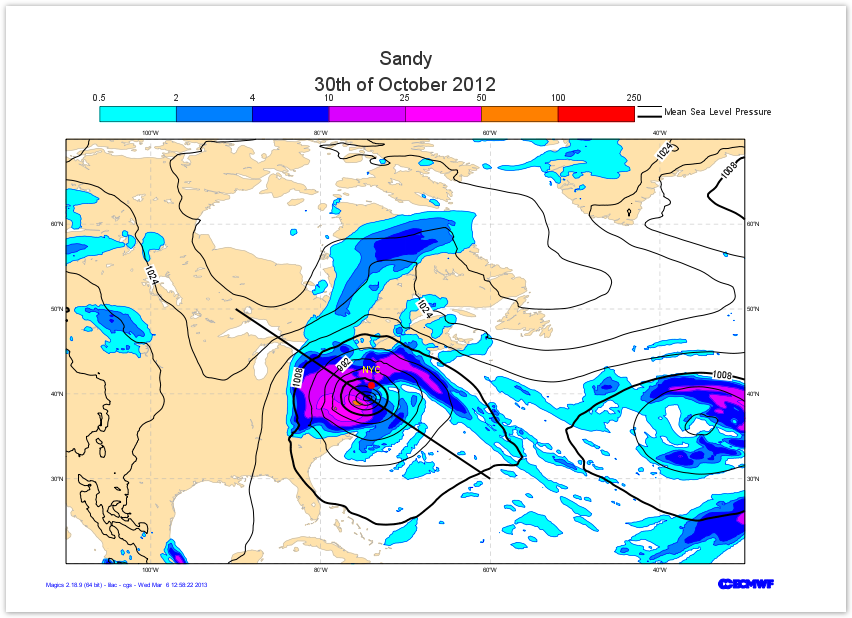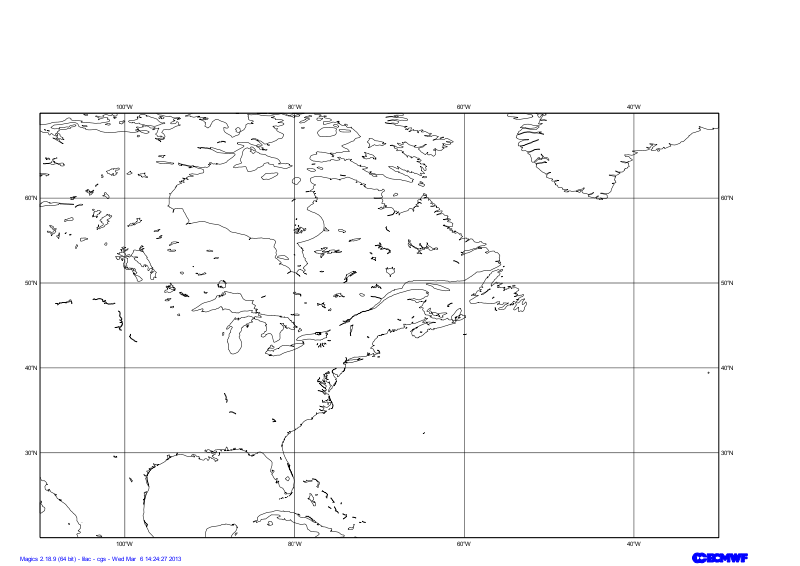Objectives
- Set-up a cylindrical projection over the United States.
- Apply land-sahding on the coastlines.
- Load a grib file containing Mean-Sea level Presssure and visualise it using black isolines.
- Load a grib file containing Precipitation and visualise it using shading technique.
- Add a legend.
- Add a text.
- Draw the position of New-York City
- Draw a line to materialise the Xsection we are going to visualise in a next tutorial
You will need to download
Setting of the geographical area
The Geographical area we want to work with today is defined by its lower-left corner [20oN, 110oE] and its upper-right corner [70oN, 30oE].
Have a look at the subpage documentation to learn how to setup a projection .
Parameters to check
subpage_lower_left_longitude |
| subpage_lower_left_latitude |
| subpage_upper_right_longitude |
| subpage_upper_right_latitude |
Setting the output
The object output allows the definition of the output format, and the settings of the output file name .
Have a look at the PNG output documentation to see which parameters are available to set-up a PNG output.
To create a PNG output Magics, you have to create an output object and to insert at the first position in the plot command
Setting the coastlines
The object mcoast allows the parametrisation of the coastlines.
Have a look at the Coastlines documentation to see which parameters are available.
To configure the look of your coastlines you have to create a mcoast object with the parameters you want.
The mcoast object has to be inserted in the plot command.
Adding a text
Magics allows the user to add of or several lines of text. The position of the text is by default above the plot, but some parameters aloow it to be moved around.
A basic html formatting can be used for colour, style, and font size.
The mtext object has to be inserted in the plot command to see the text on the result.



